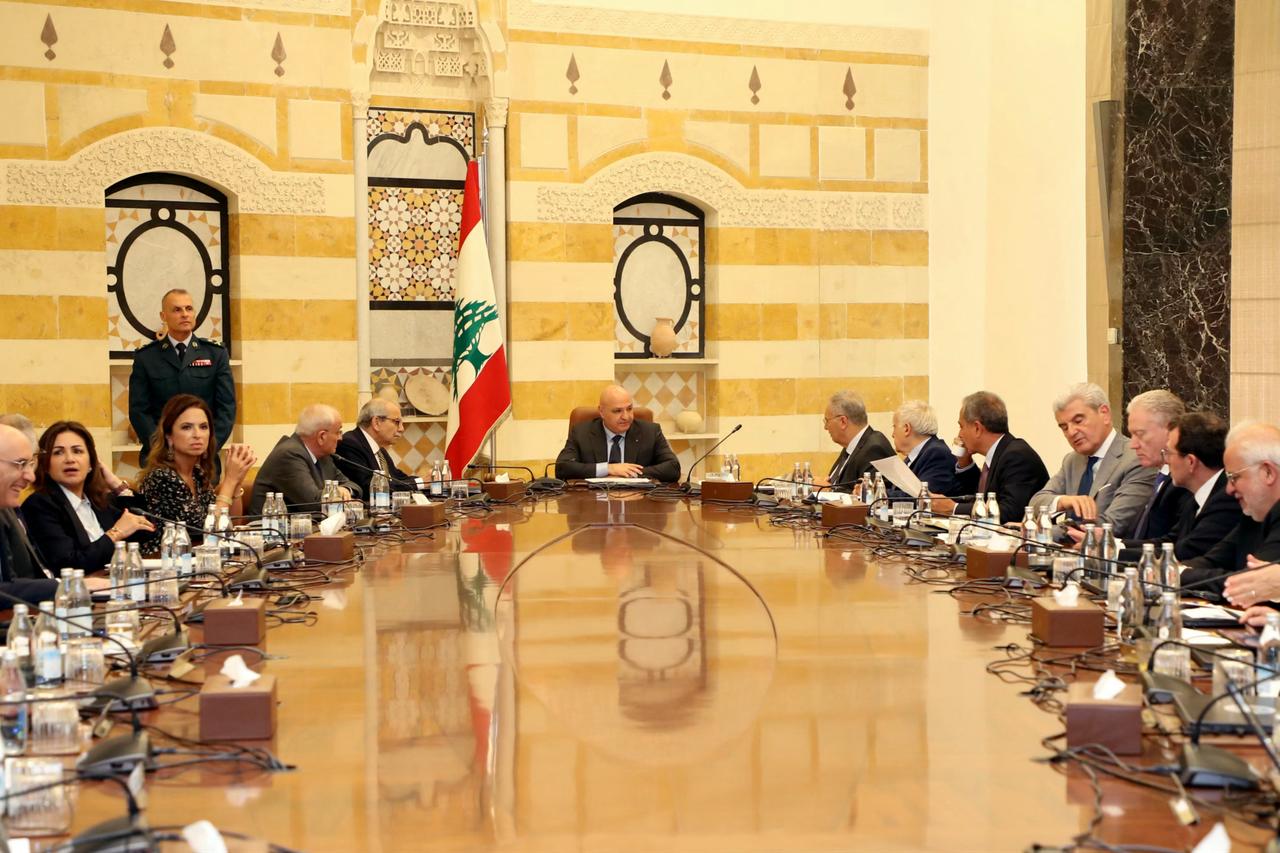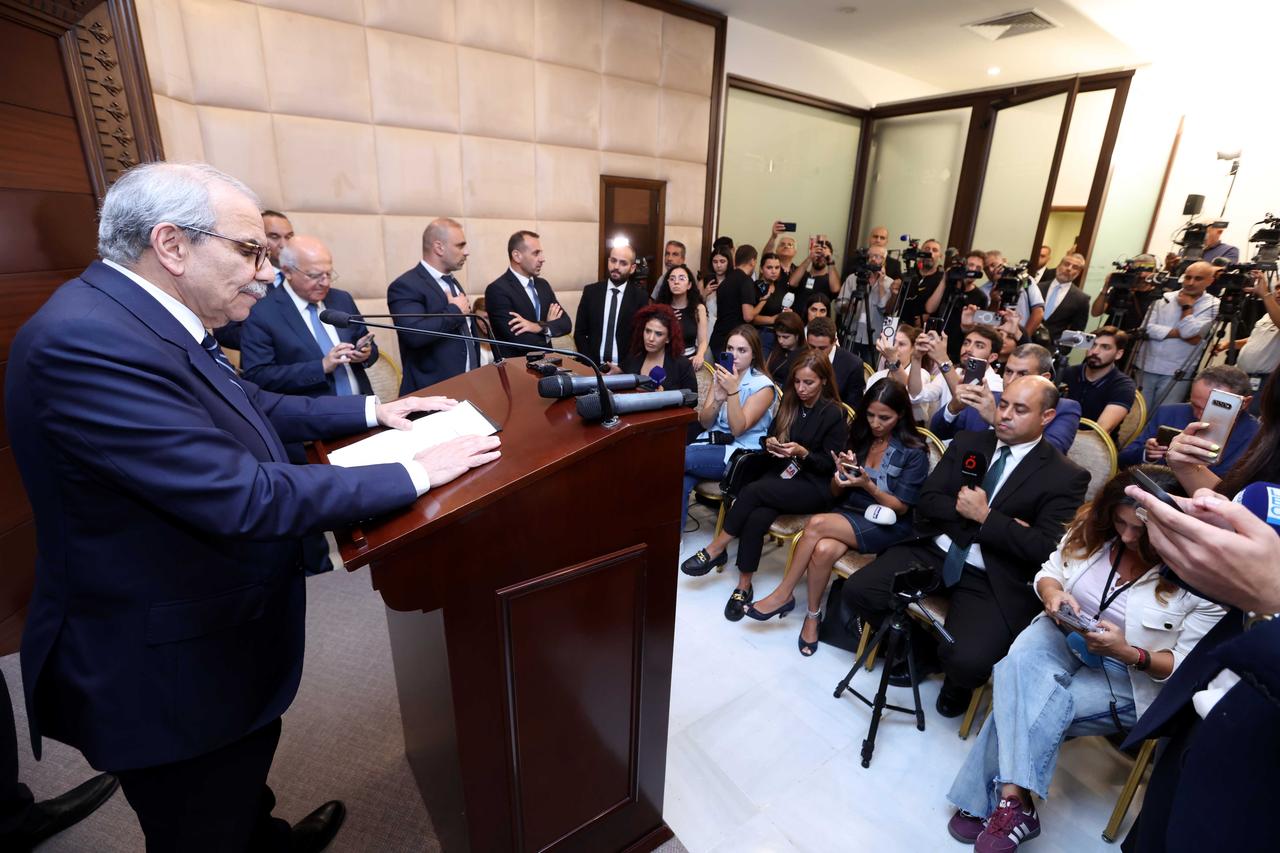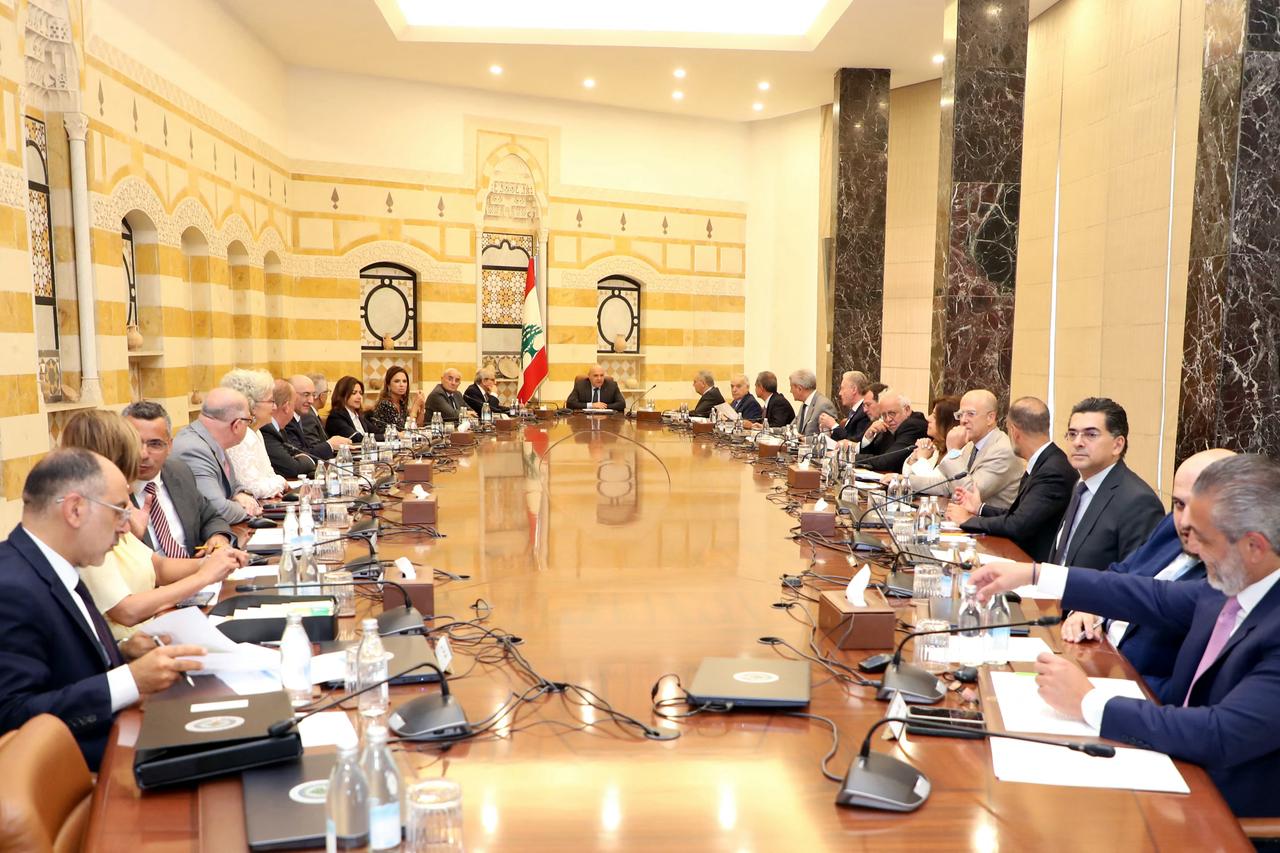
Lebanon’s Cabinet on Thursday approved the objectives of a United States-brokered proposal aimed at cementing a cease-fire with Israel, including a pledge to end the armed presence of groups such as Hezbollah and deploy the Lebanese army along border areas.
Information Minister Paul Morcos, speaking after a Cabinet meeting at the presidential palace in Baabda, said the government endorsed the goals outlined in the preamble of U.S. envoy Tom Barrack’s plan.
“We approved ending the armed presence across all Lebanese territory, including Hezbollah, and deploying the Lebanese army to border areas,” Morcos said at a press conference.
He added that the decision was intended to “restore stability, uphold state authority, and launch reconstruction efforts.”
U.S. envoy Tom Barrack praised the move, calling it a “historic, bold, and correct decision.” In a post on X, Barrack said Lebanon’s Cabinet had begun implementing the November cease-fire agreement, which ended more than a year of clashes between Hezbollah and Israel.
“The Cabinet resolutions finally put into motion the ‘One Nation, One Army’ solution for Lebanon. We stand behind the Lebanese people,” he said.
The cease-fire deal stipulates that weapons in Lebanon must be held solely by state institutions, a provision long resisted by Hezbollah, the Iran-backed militia and political party that holds significant sway in the country.
Thursday’s session was chaired by President Joseph Aoun and attended by Prime Minister Nawaf Salam and ministers. It followed a private meeting between Aoun and Salam to review the latest developments.
According to the government, the Cabinet discussed implementation of its ministerial statement, particularly its pledge to extend state sovereignty across Lebanese territory “exclusively through its own forces,” in line with the cease-fire terms.
Barrack’s proposal reportedly outlines a timeline requiring the Lebanese army to draft a concrete plan to disarm Hezbollah by Dec. 31, with a final government decision expected soon after.

Hezbollah, however, strongly opposed the initiative. Its ministers, along with allies from the Amal Movement, boycotted Tuesday’s Cabinet meeting that authorized the army to begin preparing the disarmament mechanism.
In a statement, Hezbollah declared the government’s move “nonexistent” and vowed to resist any decision that would disarm its fighters.
“This is a national security issue, not just an internal matter,” said Hezbollah Secretary-General Naim Qassem. “We are ready to discuss a defense strategy, but not under the pressure of aggression.”
Hezbollah warned that any effort to restrict its weapons while Israeli forces still occupy Lebanese land constitutes a “grave sin” and undermines the country’s defense posture.

The decision has intensified political tensions in Beirut, with U.S. officials pressing Lebanese leaders to fully implement the cease-fire terms, particularly the restriction of weapons to official security agencies.
Foreign Minister Youssef Raggi called the Cabinet’s decision “historic and final,” adding that it reflects the public’s desire for state authority over all armed groups.
Prime Minister Salam defended the move, saying, “The use of arms must be limited to the Lebanese army and security forces. Any armed activity outside these institutions has no legal basis.”
President Aoun also stressed that restoring political and security stability is essential for reviving Lebanon’s economy and implementing long-delayed reforms.
Cross-border fighting between Israel and Hezbollah began in October 2023 and escalated into a full-scale war in September 2024, killing nearly 4,000 people, including Hezbollah leader Hassan Nasrallah, and injuring around 17,000.
The November cease-fire brought relative calm, but Israeli forces have continued near-daily strikes in southern Lebanon, citing Hezbollah activity.
Under the truce, Israel was supposed to fully withdraw from Lebanese territory by Jan. 26, but delayed its pullout until Feb. 18. Israeli troops remain at five border outposts.